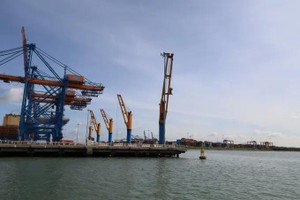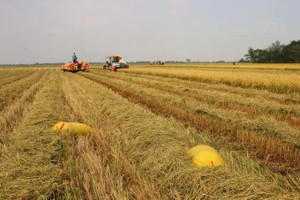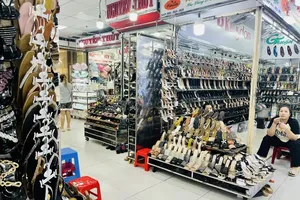Green growth and sustainable development is now an inevitable trend and a goal that all countries are striving for, including Vietnam, as it faces environmental problems heavily impacted by climate change.

During 2017 - 2023, the banking system’s green credit increased by about 22 percent annually. Many credit institutions have designed green credit packages and programs tailored to the specific activities of businesses.
As of the start of 2024, outstanding green credit was estimated at 500 trillion VND (over US$20.3 billion), accounting for only 4.5 percent of total banking credit, still falling short of expectations.
There remain many barriers to green credit supply. Among them, there is still a lack of green taxonomy – a basis for the State Bank of Vietnam (SBV) to evaluate the effectiveness of the credit solutions to realise the national green growth target. This is also an important basis for credit institutions to identify investment levels while designing suitable banking products and services.
In particular, there is no legal and policy framework pertaining to the implementation of green credit and sustainable finance.
Nguyen Duc Lenh, Deputy Director of the SBV branch in Ho Chi Minh City, said regulation amendments are necessary for facilitating access to green credit to develop green projects.
General Director of the Military Commercial Joint Stock Bank (MBBank) Pham Nhu Anh said the proportion of green credit in his bank is high, about 11 percent in 2023.
Interest rates for green credit is currently 0.5 - 2 percent per year lower than normal ones, but not many enterprises have accessed this type of credit, he noted.
He pointed out that since there is no clear legal framework on the national green taxonomy to provide green credit, MBBank applies the environmental, social and governance (ESG) standards. This includes the reduction of greenhouse gas emissions by at least 20 percent, along with standards to assess company performance in providing green credit.
Lim Dyi Chang, Senior Director for Corporate Clients at the United Overseas Bank (UOB) Vietnam, said it is not easy to identify good projects to provide green financing. Apart from business adoption of ESG practices, the bank also considers the human factor, and business impact on the environment before making credit decisions.
To help address these problems, in early August, the SBV issued Decision 1663/2024 that amends and supplements some articles of its Governor’s Decision 1604/2018 to approve the plan on green banking development in Vietnam. Some contents related to green banking, green credit, and tasks of relevant organisations and units are among the revised items.
The newly issued decision supplements a regulation that the SBV shall regularly update the list of green projects. It also details responsibilities for State agencies, including releasing guidance on green credit and environmental risk management, issuing guidance on the compilation of green credit reports, and building reference documents for credit institutions so as to create a consistent legal basis for the institutions to carry out in reality.
Dr Can Van Luc, Chief Economist of the Bank for Investment and Development of Vietnam (BIDV), said from now to 2040, the country needs to mobilise about US$368 - 380 billion, equivalent to US$20 billion each year, for green development. Given this, the legal framework perfection will open up opportunities for credit institutions to fully tap into potential in this field.
























